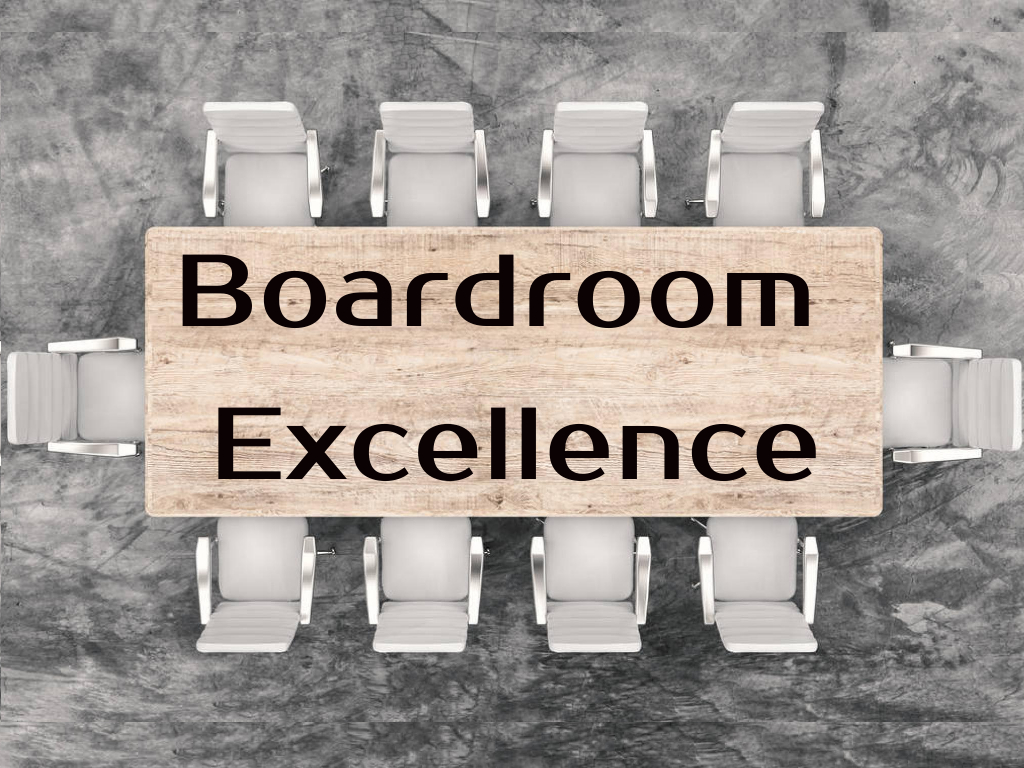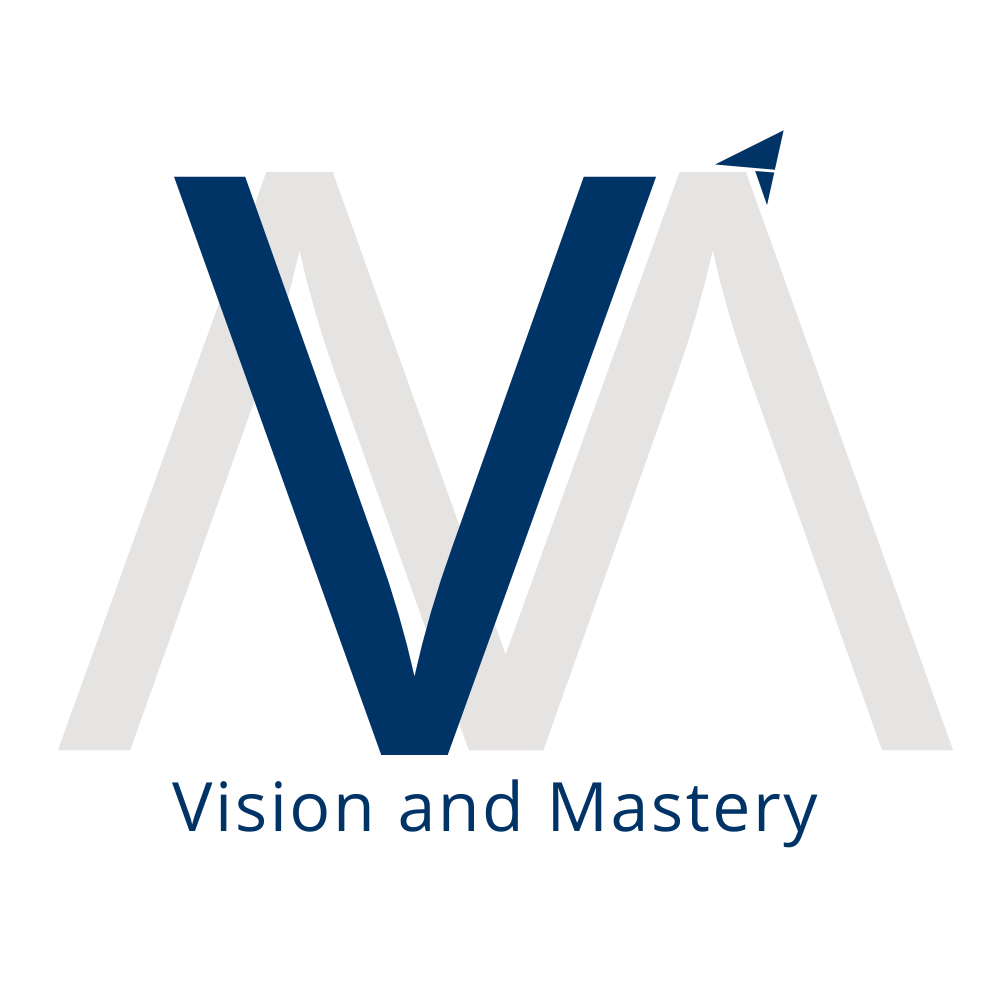Understanding Board Meetings
Definition of Board Meetings | Run a Board meeting
Board meetings serve as the backbone of organisational governance. At its core, a board meeting is a formal gathering of a company’s board of directors, where crucial decisions regarding the company’s direction, strategy, and overall management are discussed and made. These meetings typically take place regularly—monthly, quarterly, or even annually—and provide a structured environment for deliberation and consensus-building. Many use a board portal making it easy to run board meeting. There are many board management software helping in meeting preparation and capturing relevant notes.
In my experience, the efficacy of a board meeting often hinges on its preparation and the clarity of its agenda. Without focus, these gatherings can veer off course, turning into lengthy discussions that hinder decision-making rather than facilitate it.
Importance of Effective Chairing
Effective chairing is paramount in ensuring that a good board meeting remains productive and focused. A skilled chairperson can steer discussions, manage time efficiently, and cultivate a collaborative atmosphere among board members. Here are some pivotal aspects of effective chairing:
Setting the Tone: The chairperson establishes a culture of respect and open dialogue, encouraging everyone to voice their opinions.
Time Management: Keeping discussions on track prevents time wastage and ensures all agenda items are covered.
Conflict Resolution: An effective chair remains neutral and mediates conflicts that may arise during discussions, driving a spirit of teamwork.
For instance, in one board meeting I chaired, I introduced a structured format for our discussions. We tackled agenda items within allocated time slots, resulting in a decision-making approach that was direct yet inclusive. This experience underscored that effective chairing doesn’t just facilitate meetings; it empowers boards to make informed and timely decisions.

Governance Essentials for Chairpersons
Role and Responsibilities of the Chair
As I transitioned into the role of chairperson in some companies, I quickly learned that this position comes with a vast range of responsibilities that are crucial for effective governance. The chairperson is not just a figurehead; they play a vital role in guiding the board and ensuring that it operates smoothly and efficiently. Here are some key responsibilities:
Leading Meetings: The chair is responsible for facilitating discussions, keeping the meeting on track, and ensuring every board member has the opportunity to contribute.
Strategic Oversight: Providing direction for the board’s overall strategy and ensuring alignment with the organisation's mission and goals is essential.
Building Relationships: Establishing strong relationships with board members and stakeholders enhances collaboration and trust.
In my experience, actively listening and building a collaborative environment helps build rapport among board members, which is essential for team dynamics. The role of the chair also includes aligning board members to board leadership.
Legal and Ethical Considerations
Navigating the legal and ethical landscape is another critical aspect of being a chairperson. Board members must abide by their fiduciary duties, which include the duty of care and the duty of loyalty. Here are some considerations:
Transparency: Ensure that all decisions are made in a transparent manner and that all communications are clear and open.
Conflict of Interest: Encourage board members to disclose any potential conflicts of interest and maintain an ethical decision-making process.
I once faced a situation where a board member had a personal stake in a proposed contract. By having a culture of openness, we addressed the conflict before it could affect our decision-making, highlighting the importance of ethical governance. This approach not only preserved integrity but also enhanced the board's credibility in the eyes of stakeholders.

Preparing for a Board Meeting
Setting the Agenda
As I’ve honed my skills as a chairperson, I’ve realised that the success of a board meeting heavily leans on a well-structured agenda. Crafting an effective agenda not only drives the meeting forward but also clarifies expectations for board members. Here’s how I typically approach setting an agenda:
Identify Key Topics: I start by listing out essential subjects that need discussion, covering both strategic and operational necessities.
Prioritise Items: Not all topics carry the same weight. I rank them in order of importance to ensure that we address critical issues first.
Allocate Time: Each agenda item should come with a time allocation. This helps keep discussions focused and on track.
In one meeting meeting, we prioritised budget review over general updates, allowing us to make critical decisions before the fiscal year’s close.
Communicating with Board Members
Clear communication with board members is equally vital in preparation. Engaging with each member before the meeting fosters a sense of inclusion and innovation. Here’s my approach:
Distribute the Agenda Early: I send out the agenda at least a week in advance, giving everyone ample time to prepare.
Encourage Input: I invite board members to add points to the agenda or suggest relevant materials to review, which promotes co-creation. If you have committees, committee reports must be clear.
Follow-Up Reminders: A gentle reminder before the meeting helps ensure everyone is on the same page and ready for productive discussions.
In my experience, when board members feel informed and prepared, the quality of discussions significantly improves, leading to more effective decision-making and a more engaged board.

Managing the Board Meeting Effectively
Facilitating Discussions
Once the meeting is underway, my primary role shifts to facilitating discussions. This part is crucial, as the effectiveness of conversations directly impacts decision-making outcomes. I’ve found that a few strategies can significantly enhance our discussions:
Encourage Participation: I make a conscious effort to involve everyone by inviting quieter members to share their perspectives. This not only helps build inclusivity but also brings diverse viewpoints to the table.
Keep Conversations Focused: To maintain momentum, I gently steer discussions back to the agenda if they drift off track. Using phrases like, “Let’s table this for now and return to it later,” helps in managing time effectively.
Summarise Key Points: After a discussion, I summarise takeaways to ensure clarity. This not only reinforces understanding but also allows members to confirm that we’re all aligned.
During a recent debate on strategic priorities, I used summarisation to clarify contrasting views, which helped the board reach a consensus more efficiently.
Handling Conflicts and Challenges
Inevitably, conflicts arise during board meetings. As a chairperson, it’s essential to handle these situations with diplomacy. Here’s how I approach conflict resolution:
Maintain Neutrality: I strive to remain impartial, allowing each party to voice their concerns without bias. This builds trust within the group.
Encourage Constructive Dialogue: I remind members to focus on the issue at hand instead of personal disagreements. I often state, “Let’s critique the idea, not each other,” to build a positive atmosphere.
Seek Common Ground: After recognising differing opinions, I guide the board toward finding a compromise solution that aligns with our overall goals.
In one memorable meeting, a heated discussion erupted over a project’s direction. By applying these strategies, I was able to facilitate a constructive dialogue that not only diffused tension but also led to innovative ideas that incorporated everyone’s viewpoints. This experience reinforced the significance of effective conflict management in achieving board unity and progress.

Strategic Decision-Making
Decision-Making Processes
When it comes to strategic decision-making, I've learned that structure is key. Our board meetings often demand critical choices that can shape the future of the organisation. To streamline this process, I typically rely on these essential steps:
Gathering Relevant Information: Before the meeting, I ensure that all necessary data is compiled, including financial reports, market analysis, and stakeholder feedback. This groundwork allows us to make informed choices.
Brainstorming Options: During our discussions, I encourage open brainstorming. I often start by asking, “What possibilities can we explore?” This creates a collaborative atmosphere and paves the way for creative solutions.
Evaluating Pros and Cons: After laying out the options, we conduct a SWOT analysis (Strengths, Weaknesses, Opportunities, Threats) for each choice. This structured evaluation helps us see beyond initial impressions.
Just to give you an insight, in one meeting focused on product development, we explored multiple innovative ideas, using our decision-making process to weigh the potential risks and benefits effectively.
Balancing Short-term and Long-term Goals
An integral part of strategic decision-making is the ability to balance short-term gains with long-term objectives. This can often feel like navigating a tightrope, but I've found it essential to keep both elements in view. Here's how I approach this balance:
Define the Vision: I remind the team of our core mission and vision, ensuring that each decision aligns with our long-term goals.
Set Milestones: We break down our long-term objectives into achievable short-term goals. This not only provides direction but also keeps everyone accountable.
Review Progress Regularly: By scheduling periodic reviews of our strategic decisions, we can adjust our approach as needed, ensuring that we're staying on course while remaining agile in addressing immediate concerns.
For example, when deciding to invest in a new technology, we weighed the significant upfront costs (short-term) against potential competitive advantages and operational efficiencies (long-term). This approach led us to make a well-rounded decision that supported both immediate and future success, underscoring the importance of strategic decision-making in board governance.

Leadership Excellence in Board Meetings
Inspiring Confidence and Trust
As a chairperson, I've come to realise that leadership isn't just about making decisions—it's also about building a culture of confidence and trust within the board. When board members feel secure in their environment, they are more willing to share ideas and engage in meaningful discussions. Here’s how I work to inspire confidence:
Transparency: I prioritise openness in all communications, ensuring that board members have access to information and understand the rationale behind key decisions.
Consistency: Being reliable in my actions and responses builds trust over time. I make it a point to follow through on commitments and ensure consistency in tone and approach.
Empowerment: Encouraging members to express their thoughts and contributions not only enhances their engagement but also instills a sense of ownership over the board's direction.
A memorable experience was when I facilitated an open forum during a meeting to discuss our strategic goals. By inviting candid feedback and advocating for diverse viewpoints, I saw members leave with a renewed sense of confidence in our collective leadership.
Encouraging Innovation and Collaboration
Leadership also means driving innovation and teamwork. I firmly believe that diverse voices bring powerful ideas to the table, and it’s my job to cultivate that spirit. Here are a few strategies I employ:
Create Safe Spaces for Ideas: I initiate 'innovation sessions' where members can brainstorm without fear of criticism. It's amazing to witness the creativity that emerges when individuals feel free to share.
Co-Creation: I often suggest collaborative projects, encouraging mixed teams from different backgrounds. This not only sparks innovation but also deepens relationships within the board.
Celebrate Contributions: Acknowledging individual and group contributions reinforces their value and motivates ongoing collaboration.
In one particular instance, I initiated a 'reverse mentoring' program where younger board members shared insights on emerging trends with seasoned members. The energy and innovative ideas that flowed from these sessions were truly eye-opening, driving our strategic vision forward. This experience showcased the power of an inclusive approach to leadership in board meetings, ultimately paving the way for breakthrough solutions and collective success.

Ensuring Effective Follow-Up and Execution
Assigning Action Items
After a productive and successful board meeting, the real work begins. This is where effective follow-up and execution play a critical role in translating discussions into action. One of my key strategies is to ensure that action items are assigned clearly and concisely. Here’s how I approach this:
Specificity Matters: I always emphasise that each action item should be clear and detailed. Instead of a vague “increase marketing efforts,” I prefer something like “Develop a social media strategy targeted at millennials by next quarter.”
Ownership: Assigning owners to each action item holds individuals accountable. I directly ask members, “Who can take the lead on this?” This brings out a sense of responsibility and commitment.
Documenting Action Items: At the end of the meeting, I summarise the action items and distribute a written record. This serves as a reference point for all members, ensuring we’re aligned on what’s expected.
In one board meeting, we developed a new strategic initiative that required input from several departments. By clearly assigning action items, we set the stage for focused execution.
Tracking Progress and Accountability
A critical element of successful execution is consistently tracking progress and maintaining accountability. I use several tactics to ensure we stay on track:
Regular Check-ins: I schedule follow-up meetings or check-ins to review the status of action items. This not only keeps everyone accountable but also provides an opportunity to address any challenges that may arise.
Progress Reporting: I encourage teams to provide brief updates on their action items during each board meeting. This transparency promotes a culture of accountability and keeps everyone informed on progress.
Celebrate Milestones: Recognising and celebrating achievements, even small milestones, can boost morale and motivation. A simple acknowledgment during the meeting can go a long way in encouraging continued effort.
For instance, when our marketing team successfully launched a new campaign ahead of schedule, I made sure to highlight their achievement in the next meeting. This reinforced the importance of accountability and teamwork. Ultimately, ensuring effective follow-up and execution not only drives progress but also enhances the overall effectiveness of the board’s governance.

Evaluating Board Meeting Performance
Feedback and Continuous Improvement
Evaluating the performance of board meetings is essential for enhancing future effectiveness. In my experience, feedback can be a powerful tool for continuous improvement. To create a constructive feedback culture, I implement a few key strategies:
Post-Meeting Surveys: After each meeting, I share a brief survey with board members. Questions may include topics like meeting structure, engagement levels, and whether agenda items were adequately addressed. This not only encourages honest feedback but also provides valuable insights.
Open Discussions: I dedicate time in subsequent meetings for an open feedback session. This allows board members to voice their thoughts in a supportive environment. I always remind them, “We grow stronger together through constructive criticism.”
Action on Feedback: It’s crucial to act on the feedback received. If members highlight issues such as lengthy discussions or unclear action items, I make a concerted effort to address these in future meetings.
For example, after implementing feedback to streamline our agenda and discussions, I noticed a significant increase in participation and satisfaction among members.
Adapting to Changing Needs
In the landscape of governance, change is constant. I've learned that a one-size-fits-all approach rarely works; therefore, adapting to the changing needs of the board is paramount. Here are my go-to strategies:
Stay Updated on Trends: Keeping abreast of industry trends and changes allows me to anticipate the board's evolving needs. I often share relevant articles or key insights during meetings to build awareness.
Flexibility in Agenda Planning: I remain open to adjusting agendas based on emerging priorities or urgent matters. For instance, if a new regulation affects our strategy, I’m quick to revisit our agenda to address this critical issue.
Member Development: As board members grow in their roles, providing training or resources tailored to their development needs can enhance both individual and collective performance.
For instance, after recognising a gap in digital skills among our members, I organised a workshop that not only catered to their needs but also build a more dynamic discussion environment. By evaluating board performance and remaining adaptable, we create a resilient and effective governance framework that benefits the entire organisation.

Conclusion and Key Takeaways
Recap of Essential Points
As we wrap up this exploration of effective board meetings, it's essential to reflect on the key takeaways that can truly enhance our governance practices. Here’s a concise recap of what we’ve covered:
Understanding Board Meetings: We discussed the significance of clearly defining board meetings and the vital role effective chairing plays in steering discussions.
Governance Essentials: The chairperson’s responsibilities, along with the importance of legal and ethical considerations, were highlighted as core to effective governance.
Preparation is Key: Setting a clear agenda and ensuring open communication leads to more productive meetings.
Managing Discussions: Effective facilitation and constructive handling of conflicts are crucial for maintaining a collaborative atmosphere.
Strategic Decision-Making: Balancing short-term and long-term goals ensures that our decisions support the overall vision of the organisation.
Each of these facets contributes significantly to creating a well-functioning board that drives the organisation forward.
Further Resources for Chairing Excellence
For those looking to deepen their chairing skills, I highly recommend exploring additional resources:
Books: Titles like “Boards That Lead” by Ram Charan and “The New Chairperson” by Gordon H. Smith provide invaluable insights.
Webinars and Workshops: Participating in webinars tailored to board governance can enhance your understanding of emerging trends and effective strategies.
Peer Networks: Joining organisations like the Institute of Directors (IOD) can connect you with experienced peers who share best practices.
Ultimately, embracing continuous learning and improvement will enable you to lead your board with confidence and excellence. Remember, every meeting is an opportunity for growth, not just for the organisation but for yourself as a chairperson.
1. What is the role of the board chair in a board meeting?
The board chair plays a crucial role in facilitating the board meeting. Their responsibilities include ensuring that the meeting adheres to the board meeting procedures, calling the meeting to order, and guiding discussions. An effective board chair should also manage time efficiently, encourage participation from board members, and ensure that all agenda items are addressed. By doing so, they help create a structured environment that promotes productive discussions.
2. How can I prepare for a board meeting to ensure it is effective?
Preparation for a board meeting is vital for its success. Start by creating a comprehensive board meeting agenda that outlines the topics to be discussed and allocates time for each item. Distribute the board book containing necessary reports and documents to board members well in advance. Additionally, reviewing the meeting minutes from the previous meeting can help in tracking progress and addressing any outstanding issues. Engaging with board members before the meeting to gather their input can also enhance participation and insights during the meeting.
3. What are some best practices for running an effective board meeting?
To run an effective board meeting, consider implementing the following best practices: First, always start on time and call the meeting to order promptly. Second, ensure that the board meeting agenda is followed closely to keep discussions focused. Third, encourage open dialogue among board members and ensure that everyone has the opportunity to contribute. Lastly, conclude each meeting with a summary of decisions made and actions assigned, and schedule the next meeting to maintain momentum.
4. How do I manage meeting minutes effectively?
Managing meeting minutes effectively involves summarising key discussions, decisions made, and action items assigned during the board meeting. It’s essential for the board secretary to take accurate notes and to distribute the board meeting minutes to all board members promptly after the meeting. This ensures transparency and accountability. Additionally, referencing meeting minutes from previous meetings during discussions can provide necessary context and continuity.
5. What tools can assist in Board Management?
To make board management smoother, many teams use dedicated board portal software, which keeps documents secure, agendas organised, and communication streamlined all in one place. Even widely used tools like video conferencing platforms and shared cloud storage can significantly help everyone stay informed and connected effectively.
Become a High Performance Director
If you aspire to become a high-performing director, I offer an award-winning course that comprehensively covers all aspects of governance. This program includes practical guidance on running highly effective board meetings, understanding the board chair’s role, structuring board agendas, and much more. The course bundle also features additional modules such as finance for directors and executives, advanced governance, and a business excellence blueprint, providing a well-rounded foundation for board leadership.
Participants gain actionable insights into best practices for boardroom effectiveness, strategic decision-making, and compliance, equipping you with the skills and knowledge needed to excel as a director.
To learn more about the course and how it can support your professional development, please visit this link.: https://vijaymistri.com/director-excellence











